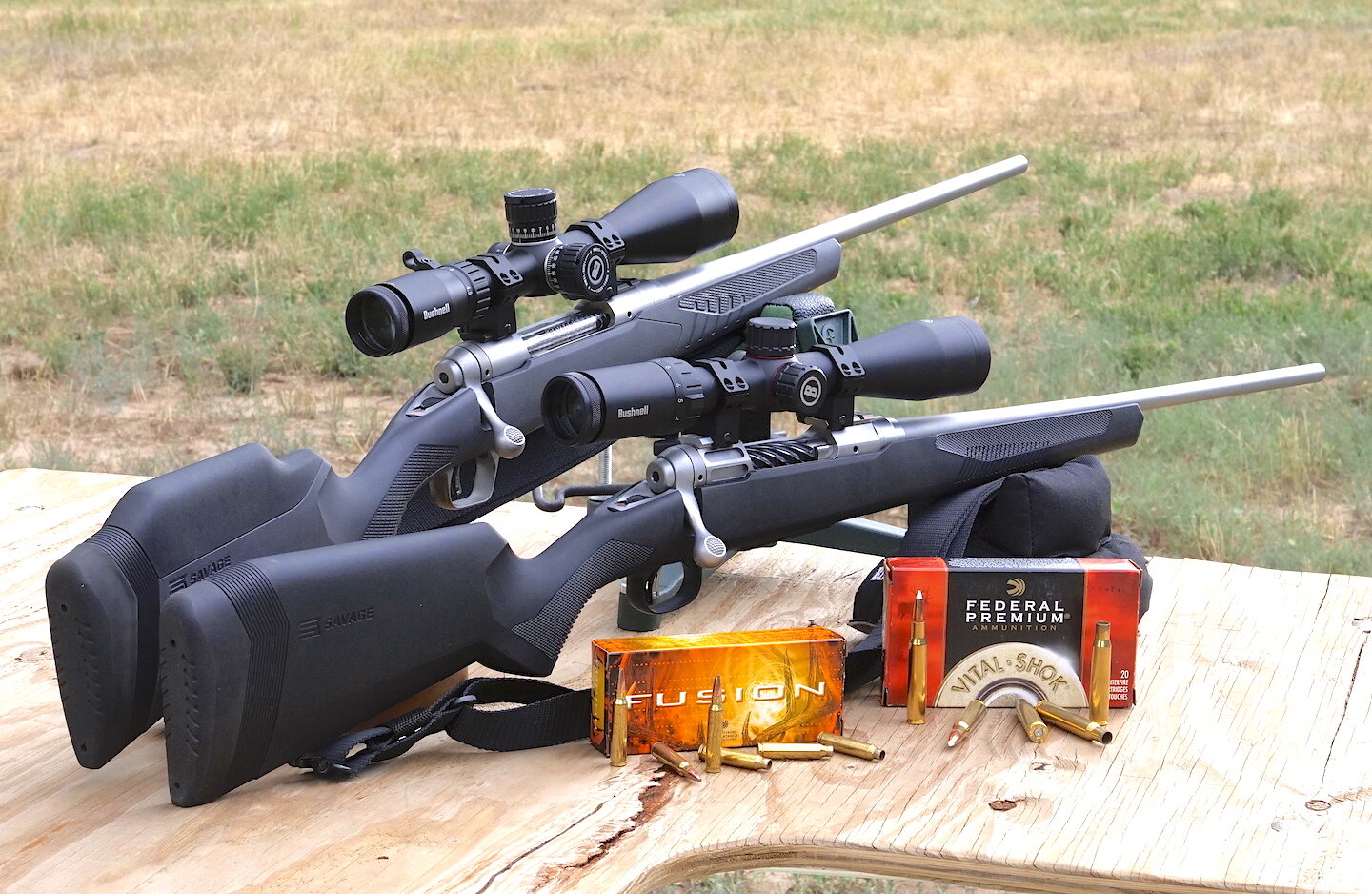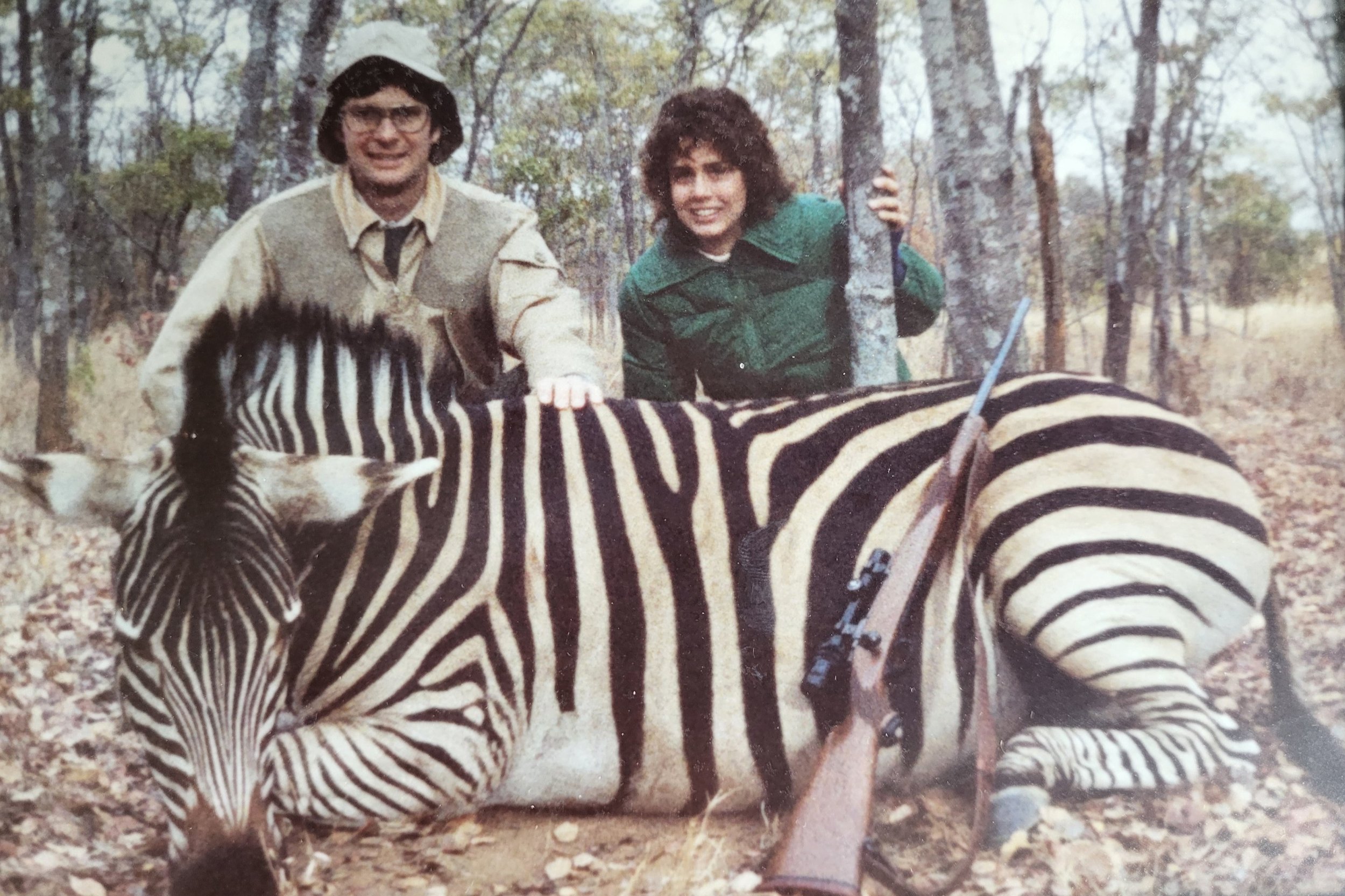Savage Africa Rifles Ready
My new Savage Africa rifles are ready to go. For most of us, an African safari seems a dream, one we are unlikely to take. Too exotic. Too far away. Too dangerous. Too expensive.
Or maybe not.
The truth is you can fly round trip to southern Africa for around $1,500 to $2,500. Once there you can rent a car for the usual rates and tour national parks much as you would in the U.S. It’s easier and safer, however, to book with a tour guide, guest farm, or Professional Hunter, Africa’s version of a U.S. hunting outfitter. They pick you up at the airport, arrange all room and board, and take you to the best places to see, photograph, and hunt Africa’s myriad game birds and mammals.
Prices vary from $2,000 for a short stay with photo touring to $100,000 if you want to be extravagant. But a good five to seven day hunt for common plains game species like oryx, kudu, impala, warthog, etc. needn’t set you back more than $10,000, and you can sometimes find five-species hunts for as little as $3,500. Read this article on planning an Africa safari for less.
Many African safari veterans claim no one has ever gone once and not wanted to return. My wife and I are living proof of that. We sometimes resist for a few years, but eventually Africa pulls us back. We’ve never regretted saving up for any safari including the one to Namibia fast approaching.
Once again we’ll be traveling with several friends and touring with Immenhof Guest Farm and Hunting Safaris. This is a warm, welcoming family with a down-home, real farm setting in which one feels immediately welcomed and accepted. Grandpas and grandmas, kids and grandkids, aunts and cousins, Americans and Germans, black, brown, and white. It’s a polyglot, polychromatic celebration of real Africa. The farm family has been in Namibia for five generations. Many of their workers, trackers, and guides have been with them for three generations. They know the land, the trees, birds, plants, animals, and history of the area.
Hunting with the Immenhof crew is more than just hunting and shooting. They show you ancient rock art, hyena tracks, Bushman villages, and ancient hunter campgrounds among the rocks and hills. And then they show you oryx, a spear-horned animal so well adapted to the desert that it can reportedly go weeks without water. They point out tiny dik-dik antelope barely bigger than a jackrabbit. Big-eared steenbuck and bat-eared foxes. Giraffes towering over the acacias, running full speed in slow motion with their tails screwed up. You see spiral-horned and hide-striped kudu sneaking through the woods, mountain zebras almost impossible to detect behind a single acacia shrub. It’s common to see a dozen antelope species in one day.
The other cost savings on a mom-and-pop safari like this is in the gear you take. There’s no need for heavy, large-caliber “African rifles.” Your deer or elk rifle and scope will suffice. This year I’m taking one of Savage’s AccuFit Model 110 bolt actions in 30-06. The beauty of this rifle is its adjustable length-of-pull and comb height. We can tailor it to fit my wife when she hunts for her eland and oryx, then reconfigure it with just a Phillips-head screwdriver to fit me. I’m also taking — of all things — a Savage Lightweight Storm 110 in 223 Remington. That’s surely no one’s idea of the perfect African rifle, but it should be the right size for a half dozen of the smaller antelope from dik-dik to impala. Traditionally these little antelope are taken with whatever big game rifle one carries, but there’s no reason one cannot hunt specifically for the little game. I’ll carry the 223 Remington while Betsy carries the 30-06 and vice versa. Should be productive and fun.
For scopes we’ll be testing the newest Bushnell Nitro and Forge models with their EXO Barrier Protection lens coatings that are supposed to be the best yet for repelling water, oil, stains, and dust. Namibia in safari season always has plenty of dust.
As for ammo we’ll shoot Federal’s 62-grain Fusion in 223 Rem. It is consistently grouping MOA. In the 30-06 we’ll shoot Federal’s 180-grain AccuBond load at 2,700 fps and its new 175-grain Edge TLR bullets. These initially grouped poorly, but after I cleaned the barrel down to shiny steel, the Edge shot MOA, too. We’ll soon see how things go in Namibia. I’ve a hunch the 223 Rem. and 30-06 will hold up their end of the deal. Stay tuned.
The author fell under Africa's spell more than 24 years ago and can't seem to break free. But he's not trying very hard.










